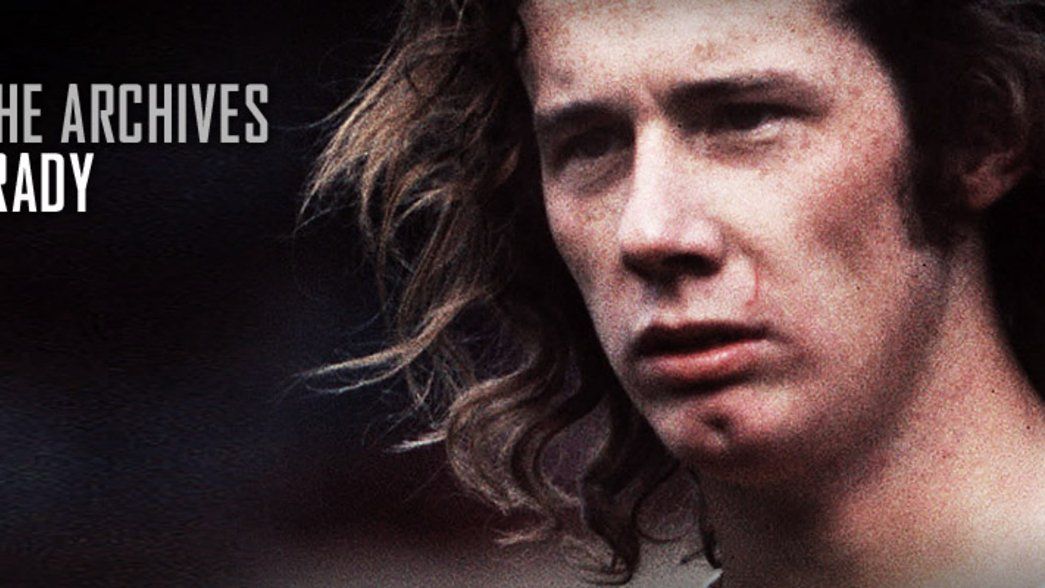To celebrate Liam Brady's 59th birthday, we pulled a classic interview with the Arsenal legend from our archives. This piece first appeared in the Arsenal Magazine in February 2006.
Liam Brady is undoubtedly an Arsenal legend. One of the most talented players ever to wear the famous red and white, Liam made his debut as a 17 year-old, before moving to Serie A where he spent seven highly successful seasons.
The left-footed midfielder won 72 caps for the Republic of Ireland, and is a former Head of the Arsenal Academy.
Where did you start your playing days Liam, and how did you come to sign for Arsenal?
I started off playing for St Kevin’s Boys Club in Dublin, when I was nine years old. I was always an attacking midfielder, or an inside forward as they were known then. Then I went to Arsenal for trials when I was 13. They were the only club I had trials with. Anyway, they liked what they saw, and then I had to wait until I finished school before I could move over to London. By that time I know there were a few other clubs interested in me, but Arsenal had always been in contact and I signed for them.

Liam Brady
Was it a bit of a culture shock moving to London?
Well I had older brothers living in England, which made things easier, but also I was very lucky in that I lived in digs with a great couple, both season ticket holders. That was in Plimsoll Road, just down the road from the stadium, and I was there for two years, which was great. They really looked after me and made it easy for me to settle in.
You didn’t have to wait long for your debut did you, making your first appearance at just 17.
Yes, the team was breaking up a bit from the ‘double’ team of 1971 and we were in transition a bit at that stage. I think Bertie Mee wanted to bring a few of the youngsters through, which he was able to do with less pressure back then, so I got my chance.
I was named in the squad for the game at home to Birmingham in 1973, and in those days there were only 12 in the squad so I was the only sub. Then, about ten minutes into the game, our centre-half Jeff Blockley got injured so I was put on. I played really well, against a Birmingham side which included Trevor Francis, and we won 1-0. So I kept my place in the side for the next game, which was away to Tottenham.
Unfortunately we lost 2-0, we had an inexperienced side, and Alan Gilzean scored both goals for them. I went on to play about half a dozen times that season, and then from the next season I was in the starting line-up.

Liam Brady parades the Double in 1971
Were you nervous when you were told you were going on?
I think it’s hard to distinguish between nerves and excitement really. When I saw Jeff pick up his injury though, the adrenalin was really flowing. He tried to carry on, but I knew he would have to come off. Then I was thrown in at the deep end but to be honest while I was on the bench at the back of my mind I was hoping someone would get injured so I would get my chance! Which players did you look up in those early days? Back in that first season or two, Frank McLintock was a big influence, although he didn’t play in my debut. Unfortunately I didn’t get to play much with him, but he was a great captain. Also Alan Ball was an influence on the pitch. I think he was one of the greatest players Arsenal ever had, but he gets forgotten about because it wasn’t a very successful era for the Club, but what a great player.
George Armstrong too was good for the young players, and in fact all of the senior players, John Radford and the rest, were big influences.
What were the highlights of your time at Arsenal?
The 1979 FA Cup Final has to be the highlight. Back then you could finish fifth from bottom but if you won the FA Cup it was considered a good season. The first time we were in the final [1978] wasn’t great because I went into the game carrying an injury, and we didn’t really perform. I think we got lost in the razzmatazz of the day really. It made us doubly determined to get back there the next year and do better.
After winning the Cup you announced that you were to leave at the end of the following season for Juventus didn’t you?
Yes, at the time I was not getting on well with the manager (Terry Neill) and I thought he was lacking in ambition for the club. I believe that we could have gone on to build a championship winning team at the time, but I don’t know if he had the same ambition. I said at the start of the season that I would be going to Juventus, but I only said that because I wanted to be up front with the fans. It may have put a bit of pressure on me and I didn’t do well in the first half of the season, but I was better in the second half.
And you nearly marked that last season with two trophies...
Yes, it was just for that one bad week at the end, when we lost two cup finals. It was a shame but I think the games caught up with us at the end. We had four matches against Liverpool in the FA Cup Semi-Final and it was too much for us.

Liam Brady scores against Tottenham Hotspur in 1978
What were the main differences you noticed in Italian football?
The game was less frantic, less physical and definitely more defensive, but I enjoyed it and it suited me. I worked hard to learn the language and by the end of the first year I had picked it up and could get by. I was there for seven years and the highlight has got to be the two Italian titles I won in my first two seasons. It was nice because the media over here at the time was saying I was making a mistake, and the boy from Ireland wouldn’t be able to hack it. So it was nice to prove a point.
At the time Italian football really was the main attraction, the big players were playing there. It was booming, and we would play in front of crowds of 60, 70 or 80,000. It was the opposite in England, where attendances were going down because of crowd violence.
Why did you decide to sign for West Ham?
I wanted to come back to England and finish my career here, and also I wanted to bring my children up in England. When I made it clear I was hoping to come back West Ham were the club that came and got me, and I was impressed by John Lyall, so I signed. They were doing well at the time.
Who were the best players you played with or against?
The best I played with during my time at Arsenal were Alan Ball and Frank Stapleton. In Italy it was Karl Heinz Rummenigge and Trevor Francis, who also went over there. At Juventus there were all the players that won the 1982 World Cup with Italy – there were too many to mention really.
As far as the best players I played against, well I have to say Diego Maradona and Michel Platini. I played against Maradona plenty of times and he was capable of winning a game on his own.

Diego Maradona
Which managers did you enjoy working under most?
I enjoyed working under John Lyall, and Bertie Mee too when I first started. Later on I worked with Don Howe who was a great coach. In Italy I have to say Giovanni Trapattoni, who is still working today.
And finally, what are your best memories from your international career?
My debut was a memorable moment. We played the Soviet Union in Dublin when I was 18, so it was obviously a great moment for me and my family. Also qualifying for the 1988 European Championships was a highlight, although it was my last hurrah in many respects.
But overall I had a 17 year playing career, won some titles and 72 caps for my country, which says it all really I think. Arsenal was the perfect place to start, a great club with all the tradition and it was important for me to set me off on my career.
There’s not much from my career that I wouldn’t do again if given the choice. My only regret is that I didn’t qualify for a World Cup when I was playing at my best, but I guess a lot of players could say that.

Liam Brady
Copyright 2025 The Arsenal Football Club Limited. Permission to use quotations from this article is granted subject to appropriate credit being given to www.arsenal.com as the source.




